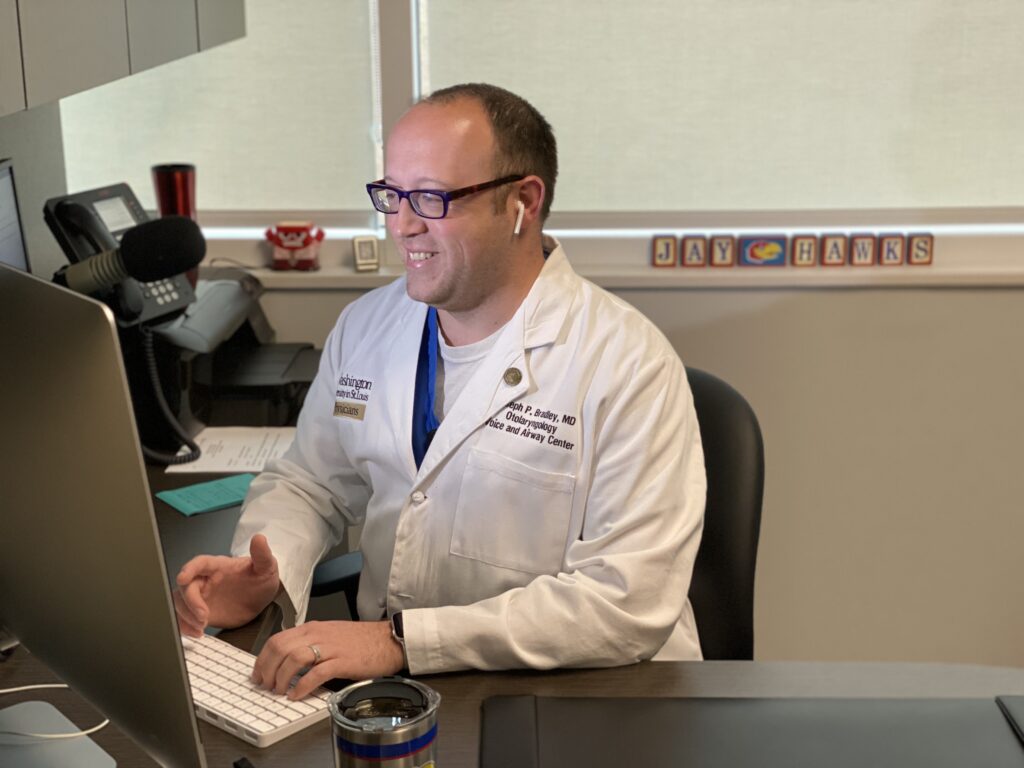To ensure patient safety amidst the COVID-19 pandemic, the Department of Otolaryngology swiftly introduced telehealth, enabling patients to see their providers via phone, tablet and computer.
But now, even as new measures make office visits safe, telehealth is a service that is here to stay.
“As we move forward, there will be certain types of office visits that might start with a telehealth visit before working a patient in to clinic,” said Joseph P. Bradley, MD. “Because of how we are trying to maintain appropriate social distancing in our waiting rooms, we have a more limited number of clinic visits to offer right now. Using telehealth enables us to help triage when patients need to come into the clinic in order to maintain a safe workflow.”
Patients are able to see any of the Department of Otolaryngology’s providers via telehealth for issues including hearing loss, dizziness, voice and throat issues. They can even have follow-up virtual visits with their head and neck cancer surgeons and engage in virtual therapy with a speech-language pathologist. What is surprising to many patients is the care that can be provided even without the healthcare provider being able to fully examine the patient.
“Because of our training in unique subspecialty areas, we often have a very good idea of what is affecting the patient based on history and prior work-up alone,” said Bradley.
Virtual visits save patients travel time and can be offered within one week of their request.
“Digital technology in today’s day and age really removes a lot of the barriers that existed to providing remote care in the past.”
Joseph Bradley, MD
“Patients have been open to telehealth visits and seem quite pleased with how easy they are and how much time it saves them,” said Bradley. “By moving a visit to the digital sphere, they don’t have to take as much time away from work, fight traffic, pay for gas, find a parking place, wait in a waiting room, or wait in an exam room. There is far more efficiency. Patients have been particularly pleased with it for follow-up visits.”
With any new technology, there may be a few challenges. To set up a telehealth appointment, a patient must have an account through the MyChart patient portal system. Through the online portal, patients can visit with their provider, access online services such as eCheck-in for virtual and in-office appointments, and even explore the online COVID-19 symptom checker. MyChart is also an easy way for patients to ask questions, refill prescriptions and see test results.
“Digital technology in today’s day and age really removes a lot of the barriers that existed to providing remote care in the past,” said Bradley. “It not only makes it easier for us to maintain the doctor-patient relationship as a phone call once did, but allows us to actually see what might be affecting a patient’s head and neck region.”
